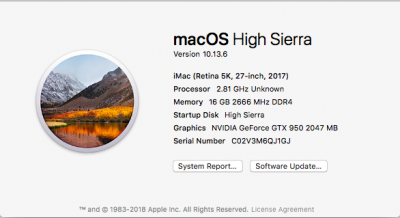- Joined
- Aug 17, 2017
- Messages
- 307
- Motherboard
- ASUS Prime X299 Edition 30
- CPU
- i9-10980XE
- Graphics
- RX 5700 XT
- Mac
- Mobile Phone
As I understand it, you use more than one display. Have you enabled the CSM in the bios? And first of all, updated the bios to the latest version (F3)?I don't actually know how to test and find the right frambuffers, I have only one of the two HDMi working and if I boot the computer without a connected screen I get a generic 1280x1024 size, but I guess that's ok as the video card doesn't know what to comply to.
I copied those framebuffers from someone on this thread, but if I disable even one of them or more, suddenly I get a black screen after apple logo. I mean shouldn't those framebuffers each individually refer to a port? Whatever one of the 3 I disable I loose the image. Boh! But I can live with this.
ps. I have successfully implemented USB ports in all three of my builds using an SSDT.


